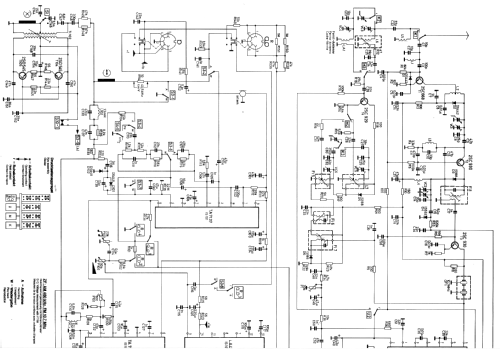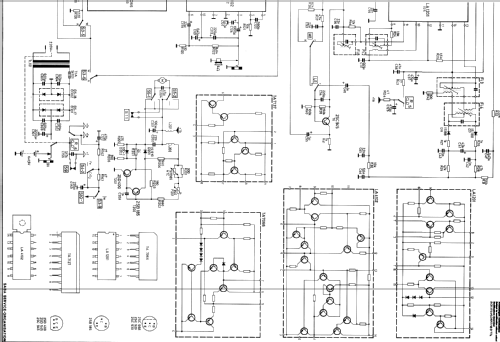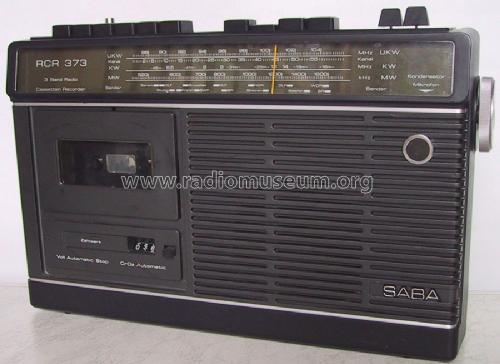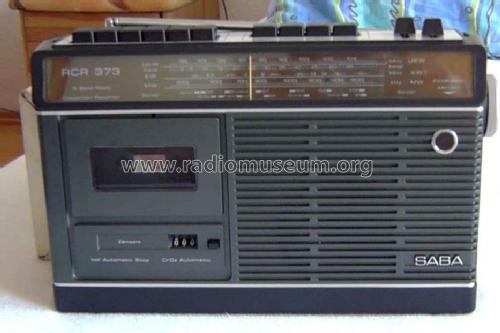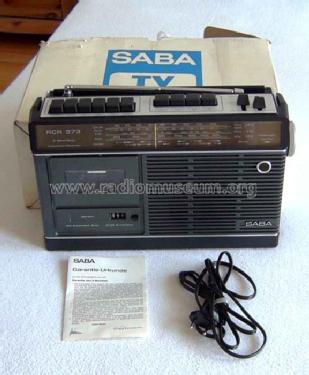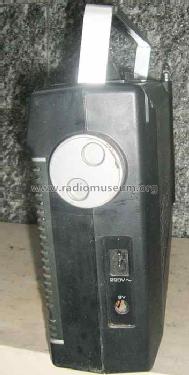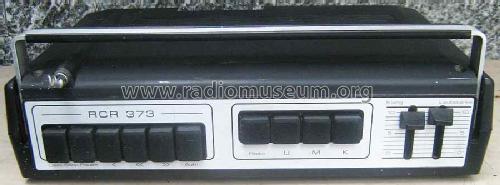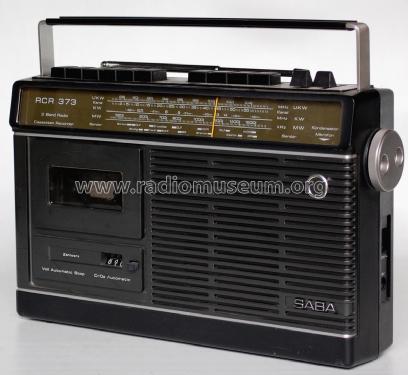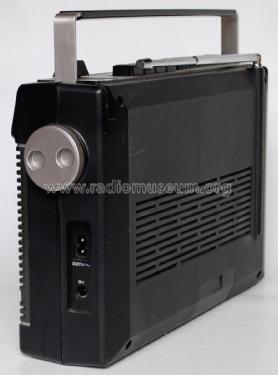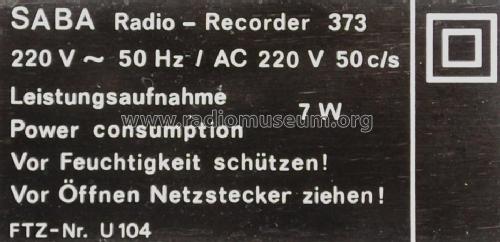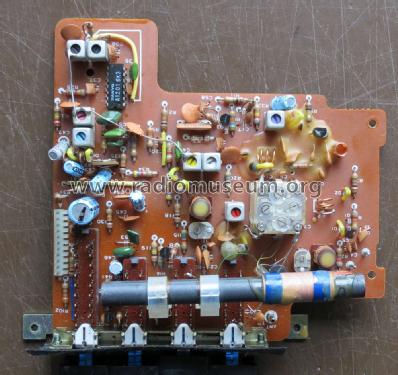RCR373
SABA; Villingen
- País
- Alemania
- Fabricante / Marca
- SABA; Villingen
- Año
- 1976–1979
- Categoría
- Radio - o Sintonizador pasado WW2
- Radiomuseum.org ID
- 86966
-
- Brand: Schwer & Söhne, GmbH
Haga clic en la miniatura esquemática para solicitarlo como documento gratuito.
- Numero de transistores
- 9
- Semiconductores
- Principio principal
- Superheterodino en general
- Número de circuitos sintonía
- 5 Circuíto(s) AM 8 Circuíto(s) FM
- Gama de ondas
- OM, OC y FM
- Especialidades
- Grabador y/o Reprod de cassetes
- Tensión de funcionamiento
- Line plus power jack, mostly with battery or storage battery / 220 / 9 / C: 6 × 1,5 Volt
- Altavoz
- Altavoz dinámico (de imán permanente) / Ø 9 cm = 3.5 inch
- Potencia de salida
- 3 W (unknown quality)
- Material
- Plástico moderno (Nunca bakelita o catalina)
- de Radiomuseum.org
- Modelo: RCR373 - SABA; Villingen
- Forma
- Portátil > 20 cm (sin la necesidad de una red)
- Ancho, altura, profundidad
- 340 x 220 x 95 mm / 13.4 x 8.7 x 3.7 inch
- Anotaciones
- ICs: 4.
Kondensator-Mikrofon eingebaut.
3-Band-Mono Radio-Recorder in Ausführung Mattschwarz/Metallic.
- Peso neto
- 2.9 kg / 6 lb 6.2 oz (6.388 lb)
- Procedencia de los datos
- Handbuch VDRG 1977/1978
- Mencionado en
- -- Original prospect or advert
- Autor
- Modelo creado por un miembro de D. Ver en "Modificar Ficha" los participantes posteriores.
- Otros modelos
-
Donde encontrará 1649 modelos, 1507 con imágenes y 1188 con esquemas.
Ir al listado general de SABA; Villingen
Colecciones
El modelo es parte de las colecciones de los siguientes miembros.
Contribuciones en el Foro acerca de este modelo: SABA; Villingen: RCR373
Hilos: 1 | Mensajes: 1
Wenn man das Rundfunkteil checken und reparieren will, gibt es ziemliche Schwierigkeiten.
Zunächst wird das gesamte Chassis ausgebaut. Dazu muß man 5 rote Schrauben lösen,von denen eine sehr versteckt ist. Dann muß man die Anschlußlitzen des Lautsprechers ablöten, so daß man das komplette Chassi aus dem Gehäuse entfernen kann.
Um nun die Rundfunkplatine zu entfernen, muß man 4 helle Schrauben lösen und auf der Gegenseite die Skalenrolle vom Drehkondensator - Antrieb abschrauben.
Ottmar Lauth, 05.Apr.18
